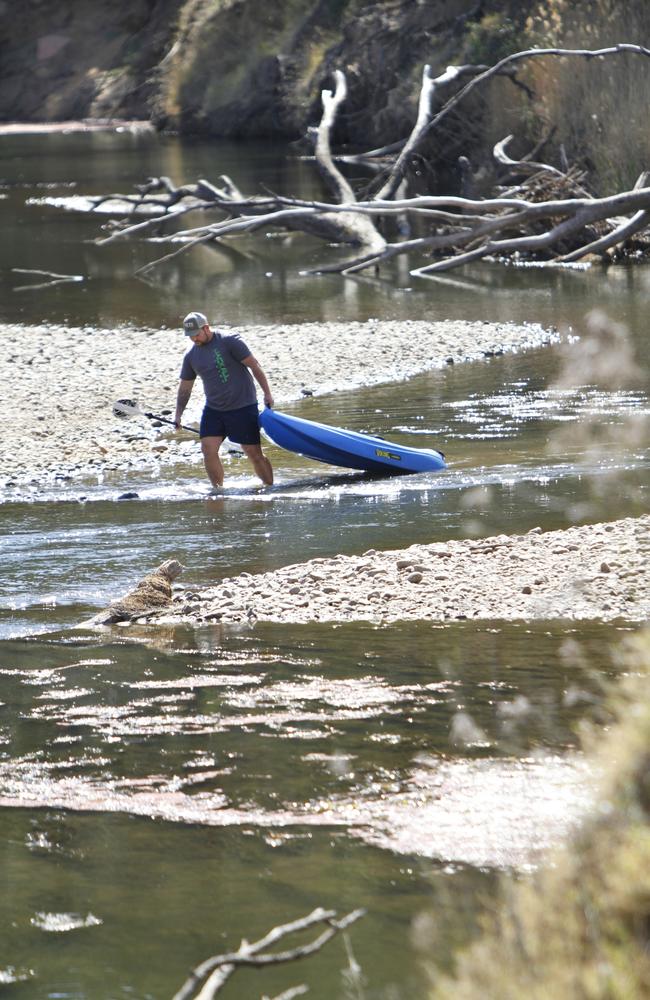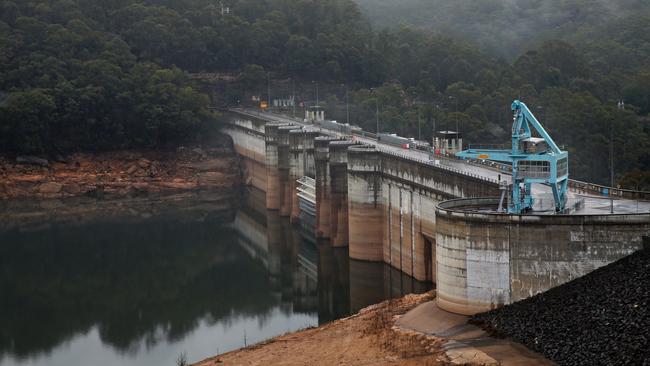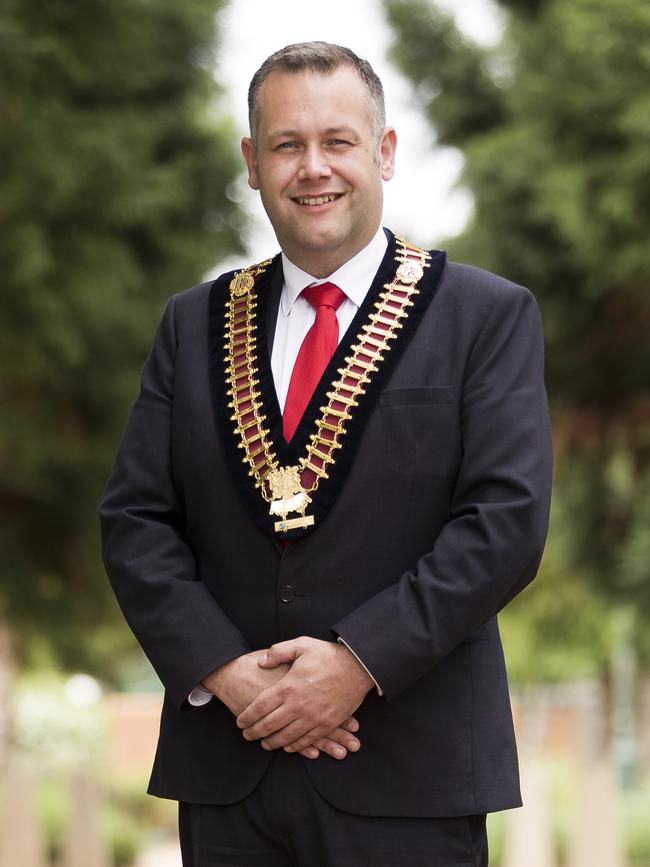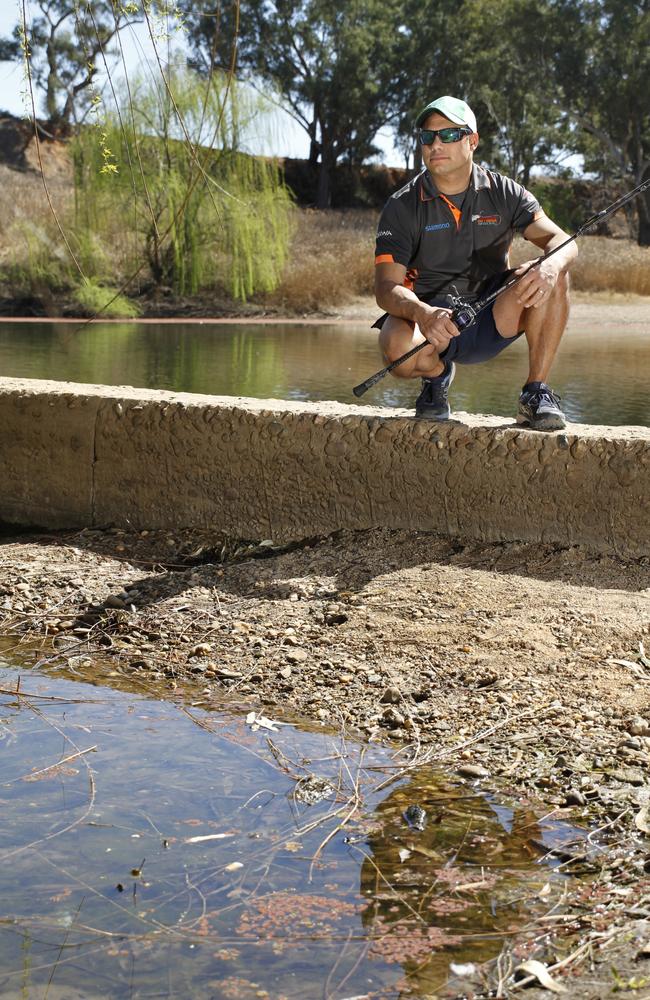Day zero: The dates rivers and dams that supply water are expected to run dry
As the worst drought on record strangles the state, WaterNSW has forecast that major towns will run out of water from rivers and dams within weeks unless there is significant rain. Even Sydney’s major dam is at risk. SEE WHEN TOWNS WILL RUN DRY WITH OUR INTERACTIVE.

- Farm Army gives drought-weary farmers a break
- Devastating reality of drought in the bush
- AGL accused of letting dam ‘run dry’
The water crisis gripping drought-ravaged NSW will come to a head within just a few weeks, when rivers and dams supplying major rural towns run completely dry.
Official “Day Zero” projections obtained by The Sunday Telegraph reveal the dates when crucial rivers and dams that supply drinking water are expected to run dry unless there is significant rainfall.

The sobering projections come from NSW’s river operator and bulk water supplier WaterNSW.
The first major town whose river could run dry, in November, is Dubbo. The same month will see Cobar, Nyngan and Narromine’s water dry up.
Record low rainfall combined with record high temperatures during the state’s worst-ever drought has crippled river systems, but the rapidly looming threat to “town water” — the water used in homes and businesses — has not been known until now.
MORE NEWS
Meet the 10 medicine women who will save your life
Will Ibrahim ask for his waxed eyebrow trophy back?
The Family killer’s shocking jailhouse revelation
In the worst-case scenario, assuming long-range forecasts are correct and there Is no significant rain on the horizon, parts of Sydney would run dry in October 2021 and the city would be completely dry by January 2022, without the desalination plant.
Rainfall is likely to be below average across most of the country for the rest of the year and into early 2020 and it is very likely to be hotter than average, according to the Bureau of Meteorology.
The amount of water in the past year that has flown into Warragamba Dam, which holds 80 per cent of the city’s water, is less than 10 per cent of the long-term average.
The news is worse for more than 170,000 rural residents in towns which could run out of all river and dam water between November this year and March 2021, and would rely on underground water from bores, or emergency supplies of bottled and trucked-in water.
Dams and rivers have been dwindling since late 2016 and have rapidly worsened in the past year, as the rainfall that tops them up has been a fraction of the long-term averages.
The Macquarie River, which is the main source of drinking water for more than 50,000 residents in Dubbo, Nyngan, Cobar, Warren and Narromine, will be the first to run dry in November.

Burrendong Dam, which can hold three times as much water as Sydney Harbour, has about 4.5 per cent left and will be empty by November, according to WaterNSW.
The last big rain in the Macquarie Valley was in 2016 and in the past two years only 3.3 per cent of the average annual rain water has filtered into the river system. This is 35 per cent less water than the next worst drought, in 1937-1940.
The Lachlan River and the upper Namoi River, which supply drinking water to 34,000 people in Forbes, Parkes, Cowra, Manilla and Boggabri, are both forecast to dry up in March next year.
The Peel River and Chaffey Dam, which supplies drinking water to 62,000 Tamworth residents, will be empty by June next year.
The water that has flowed into Chaffey Dam in the past year is less than 5 per cent of the long-term average. In the state’s far north, near the Queensland border, more than 18,000 residents in Inverell, Boggabilla and Ashford will lose flowing water between September 2020 and March 2021.

The Barwon River at Walgett stopped flowing in December and the town is now supplied by brown, brackish and foul-smelling bore water, which the state government deems safe to drink. But bottled water is handed out to pregnant women and patients with chronic illnesses who can’t stomach salty groundwater.
Even though many places have just weeks or months left before the rivers and dams dry up, towns such as Cowra, Boggabri and Inverell aren’t enforcing any water restrictions.
It came as an “absolute bloody surprise” to Cowra mayor Bill West to hear the town could run dry in fewer than six months if the Wyangala Dam — currently at 23 per cent — and the Lachlan River ran out of water.
According to Mr West, Cowra council hadn’t imposed water restrictions because his latest advice from WaterNSW was the town was entitled to 87 per cent of the water it licences from Wyangala Dam, based on current reserves.
“I’m acutely aware of the severity of the drought and impact it’s having on communities like ours and the water issues,” Mr West said. “We will implement restrictions immediately when we need to.”
Other perilously dry towns, like Forbes, Condobolin and Boggabilla, are on the lightest restrictions possible. The prospect of just seven weeks of flowing water left is a “huge issue” for Dubbo mayor Ben Shields, who has been granted $30 million from the state government to build new or deeper bores.
Dubbo is only on level two water restrictions, compared to Tamworth and Orange which are on level four restrictions. But Mr Shields is confident in the town’s underwater supply, even though WaterNSW doesn’t know how much there is.
“By the time the (Burrendong Dam, currently at 4.5 per cent capacity) is completely empty, we’ll hopefully have new bores up and running,” Mr Shields said. Across regional NSW since June 2017, the state government has invested more than $800 million in emergency water infrastructure projects such as pipelines and bores, as well as trucking water into parched towns. “This drought is outside the history books,” Water Minister Melinda Pavey said.
“The inflows into many of our state’s arterial rivers are the worst on record, and the temperatures the highest.
“While local councils are the water utility provider for their communities, the state government will continue to help them where we can.”
COD-AWFUL SCENE ON THE ONCE-MIGHTY MACQUARIE
The Macquarie River at Dubbo has historically been a happy hunting spot for fishers keen to land a fat olive-green Murray cod or golden perch.
Now only the diehards drag their tinnies along the dry riverbed or ankle-deep shallows between slightly deeper pools to find a fish.

Most fishers prefer to head out on lighter kayaks.
But even kayaks need to be dragged between the dwindling pools along the once-mighty Macquarie.
“There’s more walking than paddling,” Dubbo labourer Aaron Graham, 24, said.
“It’s hard to find flowing water and where it is flowing it’s too shallow to fish.
“The drought’s really taken its toll and it’s pretty much just pools now.”
Like 95.1 per cent of the state, Dubbo is decimated by the worst drought ever.
Outback angler Luke Carney, 36, expects a massive fish kill will this summer destroy the remaining population of prized cod and perch, as high temperatures and algal outbreaks rob the remaining water of oxygen.
Such an event will probably spell the end of his fishing tackle business.
“I’ve been fishing for 30 years and this is the worst I’ve seen it,” Mr Carney said.
“You can pretty much walk along the river and it’s only going to get worse.
“You can imagine how hot the pools are going to get, which takes the oxygen out of the water, and nothing can live without that.”
In anticipation of “fish Armageddon” this summer, the NSW government is embarking on the largest-ever fish rescue and restocking program to protect native fish, worth $10 million.
Further downstream at Warren, it’s hard to find any flowing water at all.
Past Warren, the Macquarie Marshes wetlands are rapidly drying out, after the last release of environmental water from the Burrendong Dam in November 2018.

